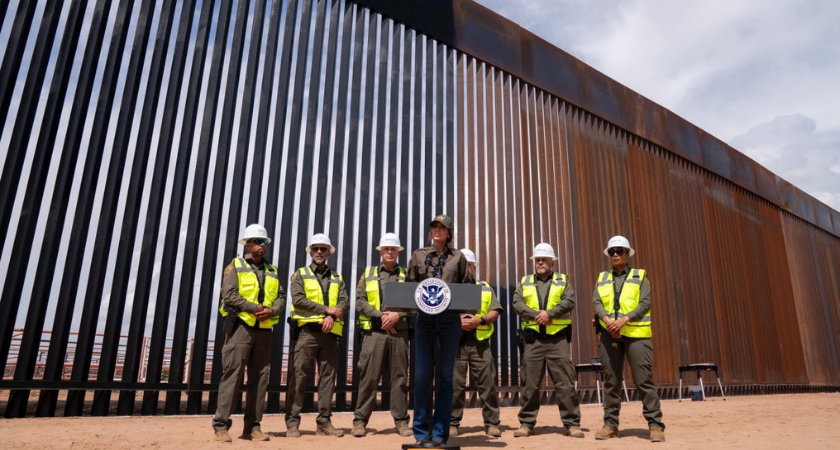
The U.S. Department of Homeland Security has moved aggressively to speed up border wall construction in California by waiving more than two dozen state and federal laws. The action, authorized by DHS Secretary Kristi Noem and effective as of September 23, 2025, applies to a large stretch of the San Diego Sector, extending from the Pacific Ocean to Border Monument 231.

Under the plan, DHS will add new physical barriers, patrol roads, lighting, cameras, and sensor technology to reinforce one of the busiest crossing points on the southern border. Officials argue that rapid construction is necessary to curb unlawful entry and enhance national security.
The San Diego Sector has long been identified as a zone of elevated illegal migration and drug smuggling. Between fiscal year 2021 and July 2025, U.S. Border Patrol agents encountered more than 922,000 migrants attempting to cross unlawfully. Agents also intercepted large quantities of controlled substances, seizing over 29,000 pounds of methamphetamine and more than 4,000 pounds of fentanyl during the same period.
In defending the decision, Noem stated: “Since the President took office, DHS has delivered the most secure border in history. More can and must be done.”
The move draws on Section 102 of the Illegal Immigration Reform and Immigrant Responsibility Act of 1996 (IIRIRA), later strengthened by the Secure Fence Act of 2006. That authority allows the DHS Secretary to waive any statutes that might hinder or delay border infrastructure projects viewed as critical to security goals.
Among the laws temporarily set aside are:
In total, more than two dozen environmental, cultural, and historic preservation measures have been bypassed, eliminating the need for environmental impact reviews or tribal consultations before construction begins.
DHS’s actions reflect a broader federal strategy rooted in Executive Order 14165, signed by President Biden to enforce “operational control” of the southern border. The order defines operational control as preventing all unauthorized crossings of people, narcotics, and contraband.
The waivers also align with the One Big Beautiful Bill Act, a multi-year funding initiative that allocates over $46 billion through FY2029 to Customs and Border Protection for infrastructure projects and enforcement technologies. Specific funding provisions include:
Construction in the San Diego Sector will begin immediately, and DHS has indicated it may issue additional waivers if project demands increase.
While supporters argue the waivers are essential for rapid response to security threats, critics are preparing challenges over what they view as an erosion of long-standing environmental safeguards and disregard for tribal and historic preservation laws.
By suspending legal review processes, the decision effectively removes one of the last procedural barriers to construction in environmentally sensitive areas. Advocacy groups and state officials are expected to respond with litigation and calls for stronger oversight.
As one of the most sweeping border security actions taken in recent years, the move positions California’s border region at the center of a renewed national debate over immigration policy, environmental responsibility, and executive power.
Originally reported by Adriana Alarcon, Journalist & Industry Analyst in Mexico Business News.